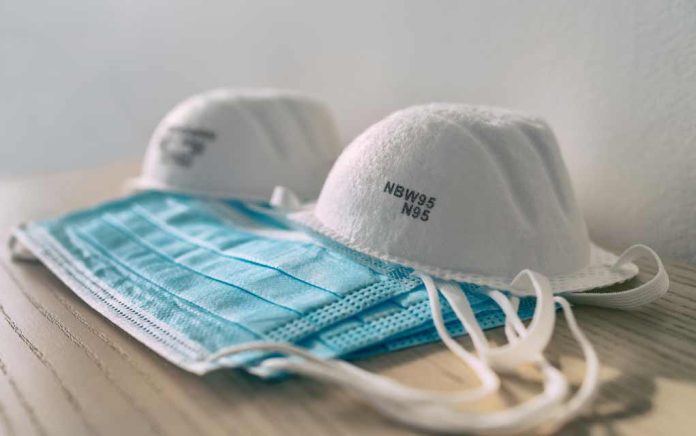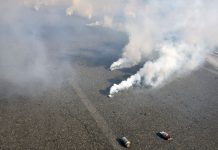(SurvivalDaily.com) – Regardless of how you feel about wearing a mask, many establishments still require that you wear one. Many people will wear the same mask everywhere they go. This is very unsanitary, and people doing this actually put themselves at risk of becoming infected with the coronavirus.
How To Clean Your Mask
The most commonly used masks right now include surgical masks, N95 masks, and cloth/homemade masks. The cloth and homemade masks the easiest to clean. Simply throw them in your laundry and wash with warm water. You can also hand wash them with warm soapy water for at least 20 seconds.
N95 and surgical masks are meant to be disposable, so cleaning them is a little different. The best way to handle these is to simply allow them to sit for at least four days. Don’t use them, and don’t touch them during the four day period.
The CDC says the coronavirus can survive on hard surfaces for about three days. However, that’s on hard surfaces. On softer surfaces viruses tend to live even shorter lives. So by simply leaving your mask alone, the virus will eventually die. This doesn’t necessarily kill any present bacteria though.
Another way to sterilize your mask is to apply heat, which could be simpler than you might think. The materials won’t burn or melt between temperatures of 165ºF to 200ºF. So you can place them in the oven and turn the temperature up to 165ºF.
It was discovered that pathogens, namely bacteria, cannot survive temperatures above 159ºF; so if you’re just trying to kill the virus heating the mask to 165ºF should do the trick. While the mask won’t melt or burn at 200ºF, the material could become dried out, making it easier for the rubber straps to break.
Using Chemicals
If you’re skeptical about the methods above, you can always turn to the use of chemicals. These three chemicals can sterilize your mask for you:
- Rubbing Alcohol
- Hydrogen Peroxide
- Chlorine Bleach
It’s important to note that each of these chemicals can be toxic when inhaled. Be sure to smell the mask before wearing it to ensure you’re not going to be inhaling fumes. The bleach should evaporate overnight, and alcohol typically evaporates faster than that. You still need to make sure there is no smell of disinfectant. If there is simply set it aside, or rinse it off and allow it to dry.
You’ll need a mold or form to ensure the mask retains its shape while drying, a tennis ball usually works pretty well. Also, you don’t want to pour the disinfectant onto the mask, you want to spray it on in a mist, covering the entirety of it. It should be noted that these chemicals can actually damage your mask as well, decreasing its effectiveness.
Final Notes
While there are several ways to sanitize your mask, the CDC doesn’t recommend it. Surgical and N95 masks are designed to be disposable, not to be reused, so these tricks should only be used in a dire emergency. You’re better off stocking up on them in case there is another shortage in the future.
~Copyright 2021, SurvivalDaily.com

















